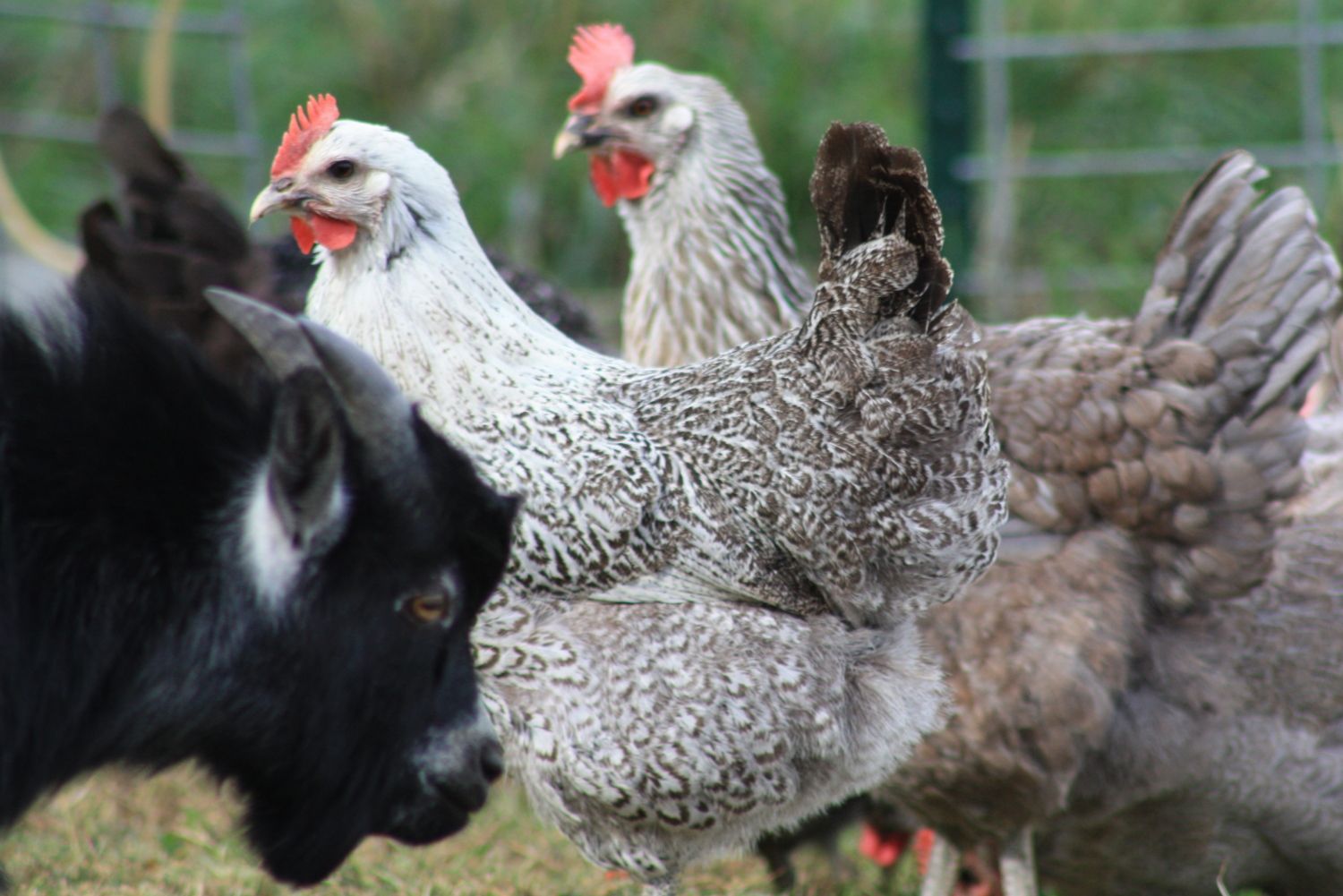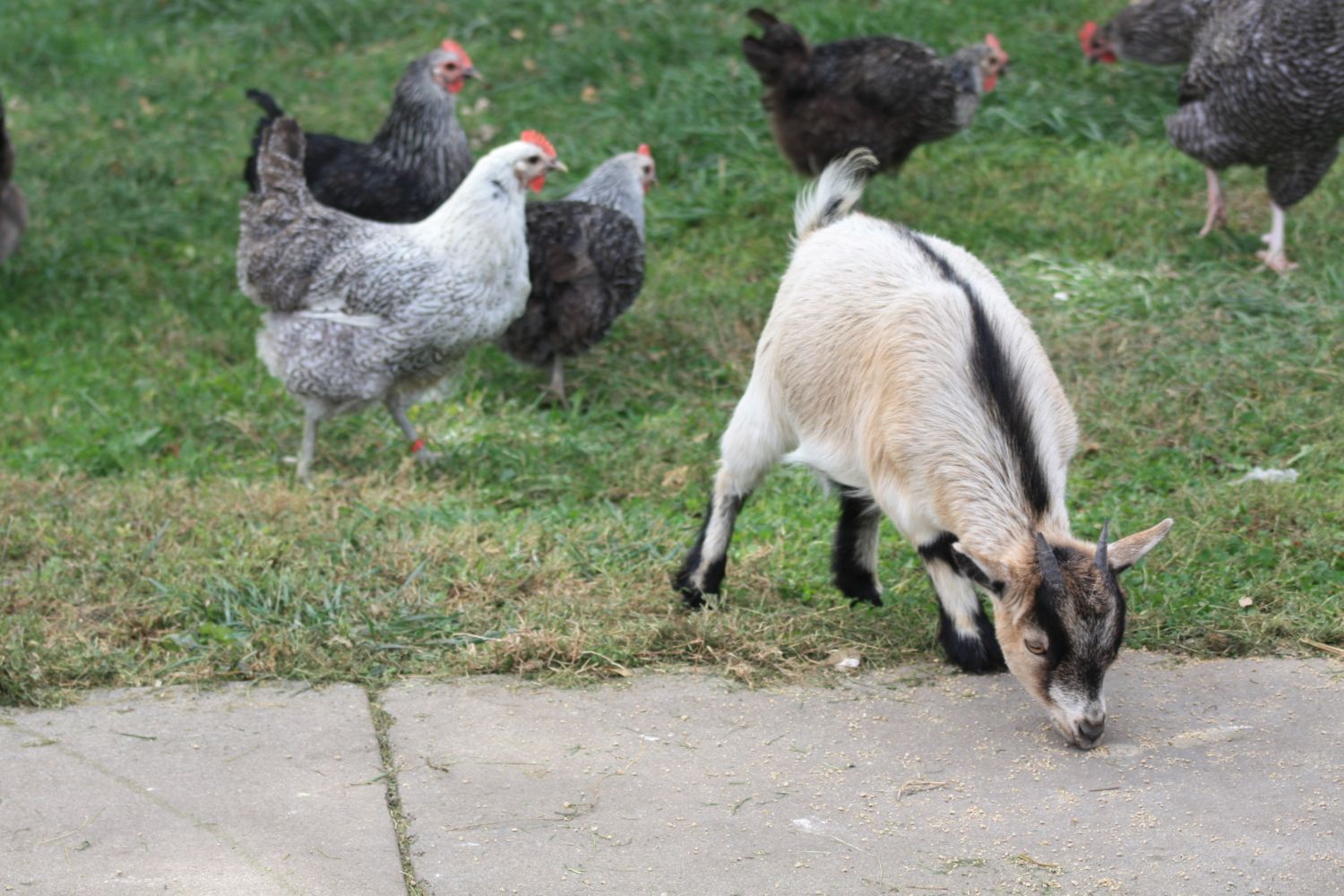I meant mixing not meucin in my last post! Also the beautiful big Roo I was referring to was the fully bred Netherlands line that is being used for the 2013 breeding program and the hens were the American lines. So my chicks are half Netherlands lines and half mixtures of the American lines if that makes more sense!
Navigation
Install the app
How to install the app on iOS
Follow along with the video below to see how to install our site as a web app on your home screen.
Note: This feature may not be available in some browsers.
More options
You are using an out of date browser. It may not display this or other websites correctly.
You should upgrade or use an alternative browser.
You should upgrade or use an alternative browser.
Marans Thread - breed discussion & pictures are welcome!
- Thread starter Wynette
- Start date
Aloha e Pinkchick,
Mahalo nui for your insight on breeding practices. I too hope that others will chime in with their mana'o.
What do you think about a black comb? I have blue coppers and three are really dark but the one female is really gray(or "blue"). Her comb though is black. You would probably cull that huh?
How's the egg color on your marans? Is that a huge culling factor for you? I know you said you have more coming. Looking forward.
aloha, puhi
Your Welcome!
No, I personally do not worry about the dark combs and faces of young pullets. It will turn red by the time they reach sexual maturity.
I have had several pullets both Blue Coppers and Black Coppers with dark faces and combs over the last 5 years. I have used them in my breeding pens because overall the good out weighed the bad, but I have subsequently paid the price with the lack of copper in my females.
It is my experience the dark faced pullets (I only speak of the pullets because I have not had a male with the dark face.....only females) are usually melanised when mature and show little to no copper and if they do show any copper it is usually too dark. However this does not mean that a very dark faced pullet could not grow up to be beautifully copper hackled..I think a bit of luck is involved sometimes and a great bird pops up where one may think it never will. 1 time I had a dark faced pullet grow out to have nice hackles, but she had black eyes and legs so dark they nearly blended in with her black plumage. She was culled for the dark eye and egg color.
If the dark face remained after maturation (which I have not seen happen on a Marans)....it would be a cull. Per the SOP for the Marans they should have red faces, combs and wattles.
Egg color is a factor. I am happy with what my birds lay, but most of all, I am just happy that I have maintained egg color. I will cull hard for egg color, I prefer to work with a minimum egg color of 5-6, but will work with birds that lay a 4, if they are overall a great bird that will lend good qualities to the next generation.
Though I love the dark dark chocolate eggs.......my favorites are the ones that are a brighter russet red color with a nice shine. I love one solid color of red, but will take them the russet color with the dark Hershey brown speckles as well.

Hey Kim

Gonna do some sorting on chicks today and am hoping to get some update shots. I'm really liking some of the oldest ones that I've held back. I'm down to 18 from the original 60 chicks, so its a pleasure to watch them running around. They are just coming up on 8 weeks at the end of the week. The second hatch chicks are about 2 weeks old and need to get bands changed on them today. Will also try to get a few pics of some, but they are wild as March hares.

Gonna do some sorting on chicks today and am hoping to get some update shots. I'm really liking some of the oldest ones that I've held back. I'm down to 18 from the original 60 chicks, so its a pleasure to watch them running around. They are just coming up on 8 weeks at the end of the week. The second hatch chicks are about 2 weeks old and need to get bands changed on them today. Will also try to get a few pics of some, but they are wild as March hares.
I would add cull for clean legs/toes at hatch. I'm sure you overlooked that because it is a no-brainer when you have been breeding Marans for a while like you have.
Yes, thank you!
I also forgot to talk about fluff at the tail break and straw/brassy colored hackle, wingbow or saddles and much more I know it.

Aloha e Pinkchick,Your Welcome!
No, I personally do not worry about the dark combs and faces of young pullets. It will turn red by the time they reach sexual maturity.
I have had several pullets both Blue Coppers and Black Coppers with dark faces and combs over the last 5 years. I have used them in my breeding pens because overall the good out weighed the bad, but I have subsequently paid the price with the lack of copper in my females.
It is my experience the dark faced pullets (I only speak of the pullets because I have not had a male with the dark face.....only females) are usually melanised when mature and show little to no copper and if they do show any copper it is usually too dark. However this does not mean that a very dark faced pullet could not grow up to be beautifully copper hackled..I think a bit of luck is involved sometimes and a great bird pops up where one may think it never will. 1 time I had a dark faced pullet grow out to have nice hackles, but she had black eyes and legs so dark they nearly blended in with her black plumage. She was culled for the dark eye and egg color.
If the dark face remained after maturation (which I have not seen happen on a Marans)....it would be a cull. Per the SOP for the Marans they should have red faces, combs and wattles.
Egg color is a factor. I am happy with what my birds lay, but most of all, I am just happy that I have maintained egg color. I will cull hard for egg color, I prefer to work with a minimum egg color of 5-6, but will work with birds that lay a 4, if they are overall a great bird that will lend good qualities to the next generation.
Though I love the dark dark chocolate eggs.......my favorites are the ones that are a brighter russet red color with a nice shine. I love one solid color of red, but will take them the russet color with the dark Hershey brown speckles as well.
Mahalo nui for your answer. I really like that pullet. I think she's going to look good. Don't know about my other three which might all turn out to be dudes. There's one with a messed up comb that might be a pullet. I sure would like to see pics of your flock, Pinkchick.
Take care, puhi
- Apr 25, 2009
- 1,026
- 124
- 301
These hens are so pretty!Better than that...I have all of those girls around! 11 of them were in with my cuckoo boy Claude last year and so I will just test mate each of them and see which one it might be...I have a hunch I know possibly which 2 it might be. They are not traditional birchens, but sports I believe.
And that wee sweet pigmy girl is Ina, I might get some babies from her this spring!If she does kid....they are going to be sooooooo teensy weensy!!!! I think I'll die when I see them!! haha
Thanks, these are my layer girls. Basically they are the ones too pretty to cull, but not good for breeding, so they get to be practical and eye candy at the same time.These hens are so pretty!
- May 30, 2013
- 10
- 0
- 22
desertmarcy
That is all good info. Thanks! I was able to get back in touch with the person I bought them from and turns out that her Ameraucana rooster may have been able to get in touch with her Marans hens
 Which is a little disappointing since I paid more for the chicks than what they were really worth. One more question. Do you think there is a possibility that the blue hen I have could still be a Marans? That's to say, if it is have Ameraucana would it still be blue, or can you only get the blue from a Marans rooster and hen?
Which is a little disappointing since I paid more for the chicks than what they were really worth. One more question. Do you think there is a possibility that the blue hen I have could still be a Marans? That's to say, if it is have Ameraucana would it still be blue, or can you only get the blue from a Marans rooster and hen?
That is all good info. Thanks! I was able to get back in touch with the person I bought them from and turns out that her Ameraucana rooster may have been able to get in touch with her Marans hens

Last edited:
Aloha,desertmarcy
That is all good info. Thanks! I was able to get back in touch with the person I bought them from and turns out that her Ameraucana rooster may have been able to get in touch with her Marans hensWhich is a little disappointing since I paid more for the chicks than what they were really worth. One more question. Do you think there is a possibility that the blue hen I have could still be a Marans? That's to say, if it is have Ameraucana would it still be blue, or can you only get the blue from a Marans rooster and hen?
Perhaps is the blue egg gene dominant over the chocolate color egg gene? Then, if the hen lays blue, you know it's hapa, but if it lays chocolate, then you know it's pure.
The question remains, is the blue egg gene dominant over the chocolate egg gene?
kden, puhi
desertmarcy
That is all good info. Thanks! I was able to get back in touch with the person I bought them from and turns out that her Ameraucana rooster may have been able to get in touch with her Marans hensWhich is a little disappointing since I paid more for the chicks than what they were really worth. One more question. Do you think there is a possibility that the blue hen I have could still be a Marans? That's to say, if it is have Ameraucana would it still be blue, or can you only get the blue from a Marans rooster and hen?
The eggs will most likely be olive colored..
New posts New threads Active threads
-
Latest threads
-
i found a duck with a severe injury with maggots in it
- Started by FairygodmotherINC
- Replies: 0
-
how to get cochin hen to go broody
- Started by Beau plus penny
- Replies: 10
-
-
-
7 week chick prolapse
- Started by Lizzie_Pinecone24
- Replies: 0
-
-
Threads with more replies in the last 15 days
-
-
Question of the Day - Thursday, August 14th, 2025
- Started by casportpony
- Replies: 75
-
-
-
-
×


